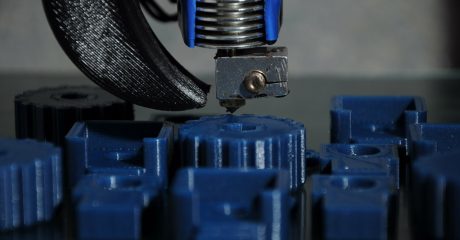CNC Machining and 3D printing both have their strengths and weaknesses when it comes to producing parts – whether it’s a prototype or not. Machine shops all over the world that are implementing both of these technologies are benefiting significantly from them. For machine shops looking to implement 3D printing, the recommendation is as follows: start with a polymer or composite printer and put it to use for tooling applications. This will help workers learn about the technology and explore its possibilities. However, if there’s any confusion between 3D printing and CNC machining, then we’ve got you covered. In this blog we cover the differences between two, when each should be used, and some specific applications for 3D printing.
3D Printing vs CNC Machining
Both these manufacturing technologies are robust and efficient. Before picking which one is best to use, you first have to understand the difference between the two.
- Range of Applications: 3D printing is widely used for prototyping and small-batch production. It’s easy to use and speeds up the entire process, saving both time and money. On the contrary, CNC machining has stringent limits and is mainly used for the mass production of parts. Additionally, it can’t produce parts with highly complex shapes as accurately as 3D printing does.
- Material Options: Both 3D printing and CNC machining offer freedom when it comes to designing products. However, 3D printers can work with various materials, including rubber, metal, plastic, paper, ceramic etc. While CNC machines are restricted to fixed material options for prototyping.
- Speed: 3D printing offers swift prototyping because of its faster build speed. In contrast, CNC machining requires manual work and machine time to produce a product. So, it’s not a time-efficient option for the prototyping industry.
- Accuracy: For prototyping, 3D printers are accurate and fast, especially for fine details and intricate geometries. However, CNC machining offers versatility in material selection and is thus widely used for volume production.
When to use CNC Technology
CNC is among the most used manufacturing processes because of its speed & efficiency. In the manufacturing industry, CNC machines are used for mass production. Most commonly, it’s used for the mass production of tools & fixtures that are repeatedly used in manufacturing processes. CNC machining is also ideal for fabricating molds and dies since they require high accuracy and surface finish.
When to use 3D Printing
3D printing is best suited for prototyping & low-volume manufacturing. In addition, it’s suitable for producing parts that have intricate details. The most significant advantage of 3D printers is creating unique and complex components that are difficult to make with conventional processes like CNC machining. This technology does not take a lot of time, and you can continue testing further iterations without wasting much time & resources.
Applications for 3D Printing
Some of these tooling applications include:
- EDM Guides: In some wire EDM and EDM drilling applications, it’s helpful to use a guide. In these situations, you can design and print a composite guide to ensure precise, accurate machining.
- Jaws for Difficult-to-Hold Parts: Sometimes parts may be difficult to hold in traditional jaws. However, specially printed composite jaws can hold those parts until a shop has transitioned to traditional machined jaws.
- Organization Around the Shop: Shops can 3D print a number of brackets and parts to mount cables and wires to keep them neatly arranged. It’s also useful to print other parts to help keep the shop organized, including stands to hold tools.
Call Custom Tool Today!
No matter the challenge, Custom Tool & Grinding ensures you get the best and are working with the best. We provide quality and experience to help you secure the services and products you need. Contact us to learn more about how we can help you.
